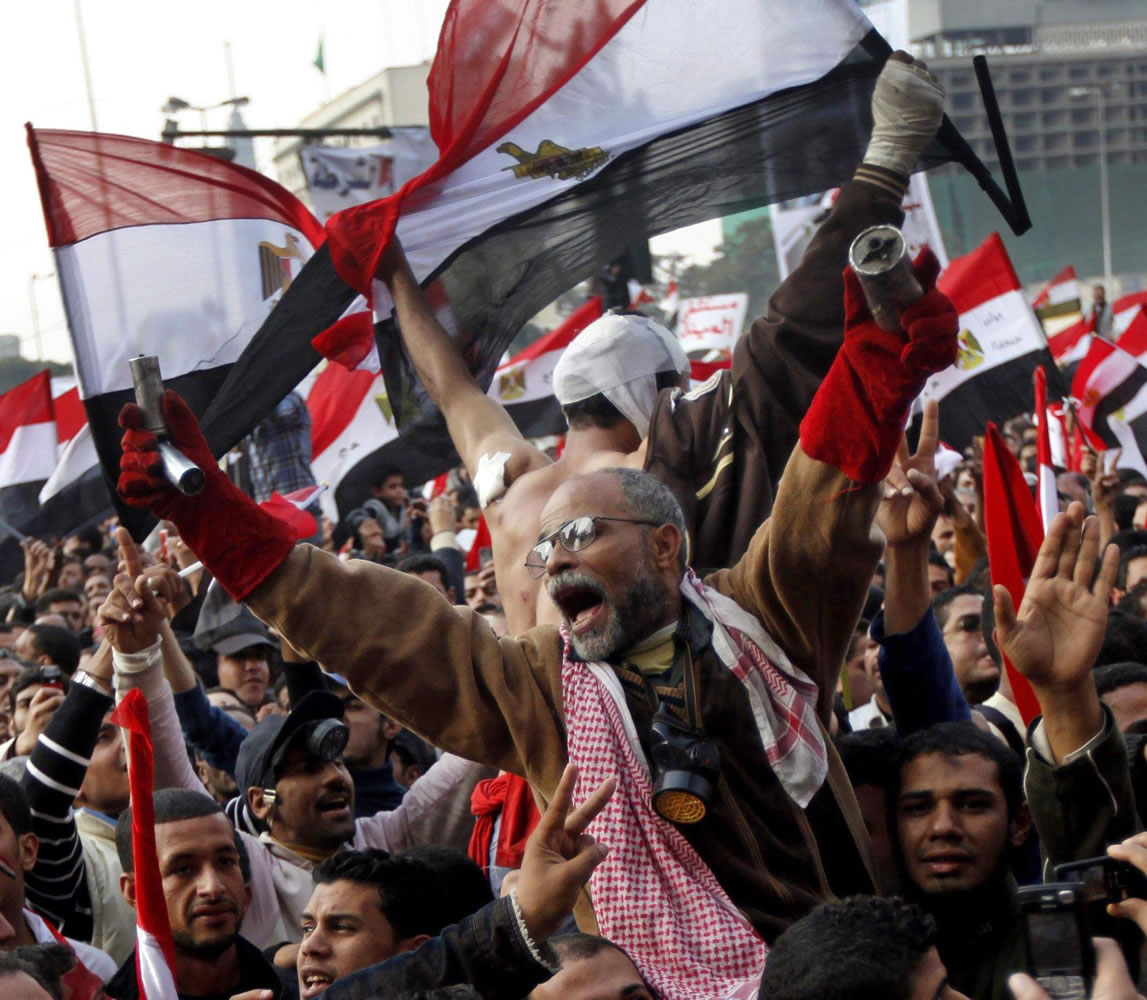CAIRO — The U.S. increased pressure Friday on Egypt’s military rulers to hand over power to civilian leaders, and the generals turned to a Mubarak-era politician to head a new government in a move that failed to satisfy the more than 100,000 protesters who jammed Tahrir Square in the biggest rally yet this week.
The demonstrators rejected the appointment of Kamal el-Ganzouri as prime minister, breaking into chants of “Illegitimate! Illegitimate!” and setting up a showdown between the two sides only three days before key parliamentary elections.
The size of the rally and the resilience of protesters in the face of the violence used by security forces in this week’s deadly street battles have won back for the movement much of the strength it projected during the 18-day uprising that ousted President Hosni Mubarak in February.
Showing the sort of resolve from the earliest days of the Arab Spring, the protesters say they will not leave the iconic square until the military rulers led by Field Marshal Hussein Tantawi step down and a civilian presidential council is formed to run the country until a new leader is elected.
“They stole our January revolution because we did not agree on who should represent us,” said activist Sedeeqah Abu Seadah. “We shouted ‘erhal’ (leave) but did not shout the name of the person we want.”
The military’s appointment of el-Ganzouri, its apology for the death of protesters and a series of partial concessions in the past two days suggest that the generals are struggling to overcome the most serious challenge to their nine-month rule, with fewer options now available to them.
Significantly adding to their predicament, the Obama administration brought its position on the crisis in Egypt closer to the protesters’ demands, urging the military to fully empower the next interim civilian government.
“We believe that Egypt’s transition to democracy must continue, with elections proceeding expeditiously, and all necessary measures taken to ensure security and prevent intimidation,” the White House said in a statement.
“Most importantly, we believe that the full transfer of power to a civilian government must take place in a just and inclusive manner that responds to the legitimate aspirations of the Egyptian people, as soon as possible,” it said.
The adjustment in the Obama administration’s approach is significant because the Egyptian military, the nation’s most powerful institution, has in the past 30 years forged close relations with successive U.S. administrations, receiving $1.3 billion annually in aid. It followed the public U.S. endorsement of the military’s original timetable for the transfer of power by late 2012 or early 2013.
The choice of el-Ganzouri, who served as prime minister under Mubarak between 1996 and 1999, deepened the anger of the protesters, already seething over the military’s perceived reluctance to dismantle the legacy of the ousted president’s 29-year rule.
Hundreds of protesters moved from Tahrir Square and began a sit-in outside the headquarters of the Cabinet, a few blocks away, vowing to prevent el-Ganzouri from entering.
The protest movement launched an attempt to unify its demands and present an alternative to el-Ganzouri. Twenty-four protest groups, including two political parties, announced they were creating their own “national salvation” government. They said it would be headed by a presidential council led by Nobel Peace laureate Mohamed ElBaradei with deputies from across the political spectrum to which they demanded the military hand over power.



